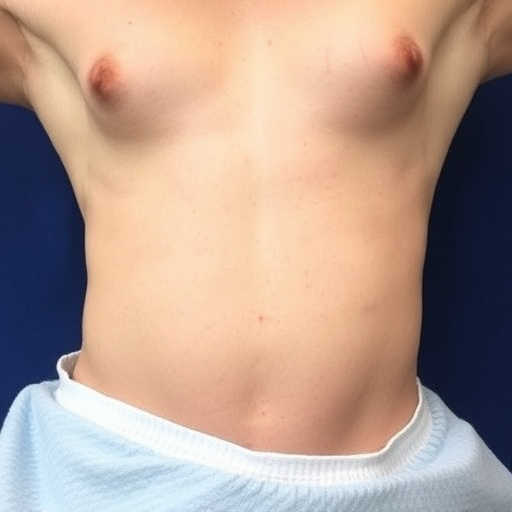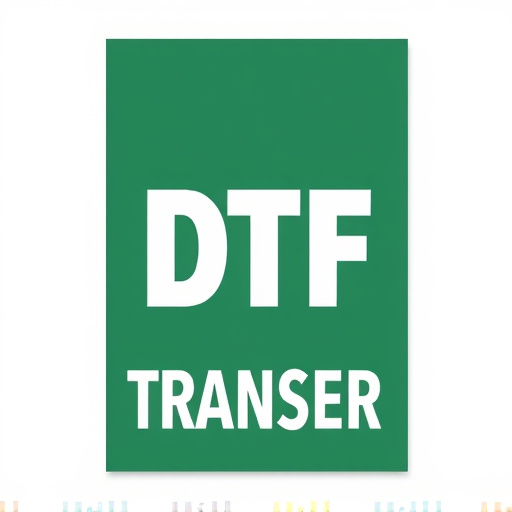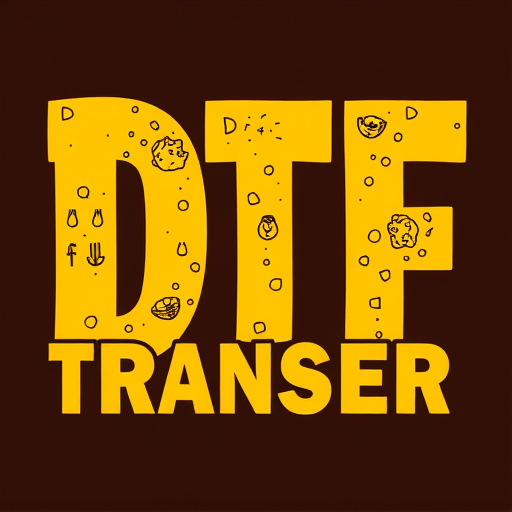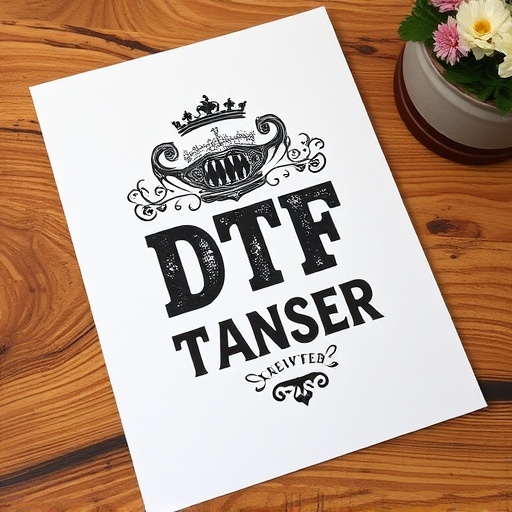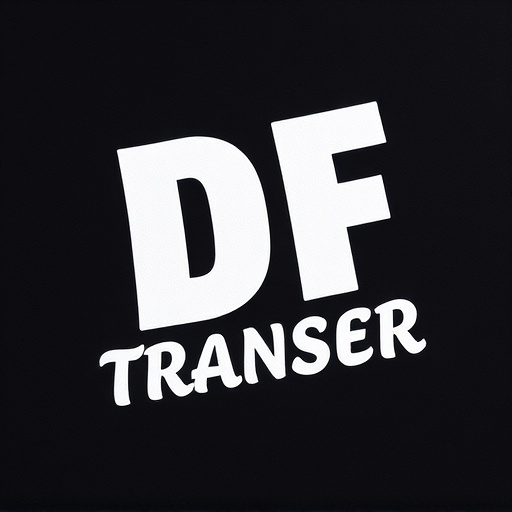Direct to Fabric (DTF) Transfer and Printing is a game-changing technology for synthetic fabric decoration. It offers faster production times, vibrant and durable prints, and versatility across various industries like apparel, home textiles, and accessories. Key factors for success include material compatibility, substrate selection, precision printing, and optimal temperature control to prevent imperfections. DTF's future holds promise with advancements in design palette, digital customization, and sustainable solutions, poised to revolutionize fashion, home décor, and advertising globally.
In today’s market driven by dynamic fashion trends, understanding synthetic fabric applications like DTF (Direct-to-Fabric) transfer printing is crucial. This comprehensive guide delves into the intricacies of DTF transfer and printing, exploring material compatibility as the cornerstone for successful DTF applications. From choosing ideal substrates to navigating factors influencing print quality, this article equips readers with insights to overcome challenges and embrace future innovations in DTF technology for fabrics, ensuring optimal results every time.
- Understanding DTF Transfer and Printing: A Comprehensive Overview
- Material Compatibility: The Key to Successful DTF Applications
- Choosing the Right Substrates for DTF Transfer Prints
- Factors Affecting Print Quality: Ensuring Optimal Results
- Common Challenges in DTF Fabric Printing and Their Solutions
- Future Trends: Innovations in DTF Technology for Fabrics
Understanding DTF Transfer and Printing: A Comprehensive Overview
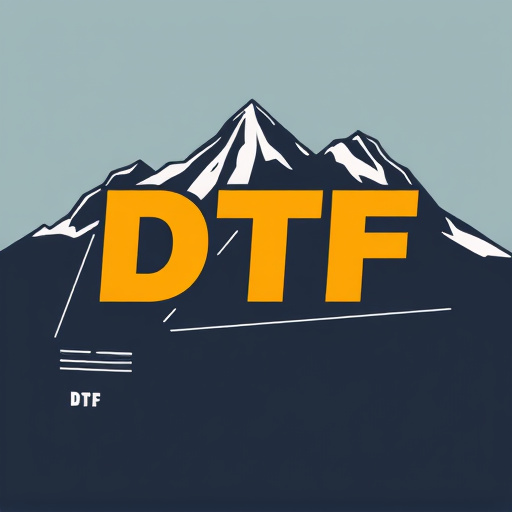
DTF (Direct to Fabric) Transfer and Printing is a cutting-edge technology revolutionizing the way synthetic fabrics are decorated. This process eliminates the need for traditional printing methods, offering faster production times and superior results. DTF involves transferring ink directly onto the fabric’s surface using heat, ensuring vibrant and long-lasting DTF prints. The method is particularly versatile, suitable for a wide array of synthetic materials, making it a popular choice in the apparel, home textiles, and accessories industries.
Understanding the intricacies of DTF transfer is essential for designers and manufacturers. It allows for complex designs with intricate details, achieving a level of customization previously unattainable. The technology’s precision ensures that every element of the design is accurately reproduced on the fabric, resulting in high-quality DTF prints. Moreover, DTF Printing offers cost-effectiveness without compromising quality, making it an attractive option for both small-scale artisans and large-scale production runs.
Material Compatibility: The Key to Successful DTF Applications
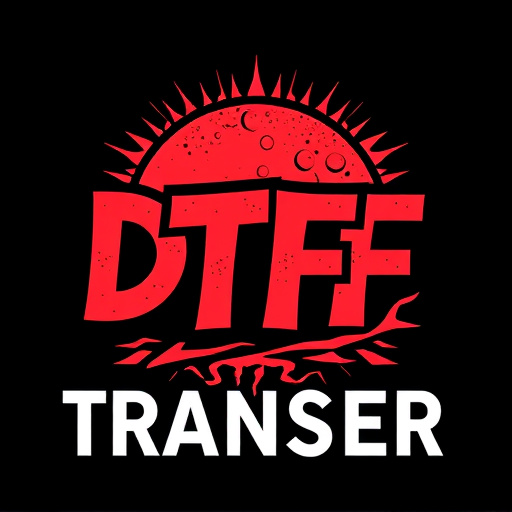
Material compatibility plays a pivotal role in the success of Direct to Fabric (DTF) applications. When selecting materials for DTF transfer, it’s crucial to consider factors like texture, porosity, and composition. Incompatible materials can lead to issues such as ink absorption discrepancies, surface tension problems, or even ink degradation, resulting in subpar prints. For instance, certain synthetic fabrics may not absorb ink effectively, leading to a dull or incomplete DTF print.
Choosing materials that align with your DTF printing method ensures optimal results. The right combination of fabric and ink allows for better adhesion, vibrant colors, and long-lasting durability of the prints. Understanding material compatibility is key to achieving high-quality, crisp DTF prints, be it on t-shirts, bags, or other textile products. This knowledge enables users to select fabrics suitable for their specific DTF printing needs, ultimately enhancing the final product’s aesthetic appeal and longevity.
Choosing the Right Substrates for DTF Transfer Prints
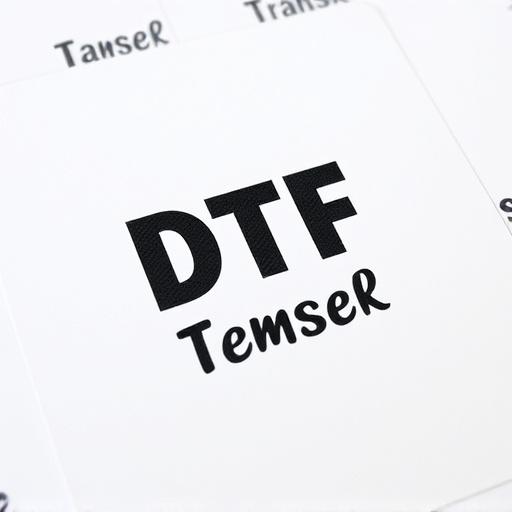
When it comes to DTF (Direct-to-Fabric) transfer printing, selecting the suitable substrates is a crucial step in achieving high-quality DTF prints. The right substrate ensures that the vibrant colors and intricate designs of DTF Transfer are accurately reproduced on various fabrics. Different materials have varying properties, so understanding their characteristics is essential. For instance, cotton and polyester blends are popular choices due to their versatility and ability to accept ink effectively.
Choosing the appropriate substrate depends on the final application. For apparel, lightweight and breathable fabrics work best, while for home decor, heavier materials like canvas or linen can provide a more durable finish. It’s important to consider factors like absorbency, stretch, and moisture retention to ensure the DTF prints are long-lasting and remain vibrant even after multiple washes.
Factors Affecting Print Quality: Ensuring Optimal Results
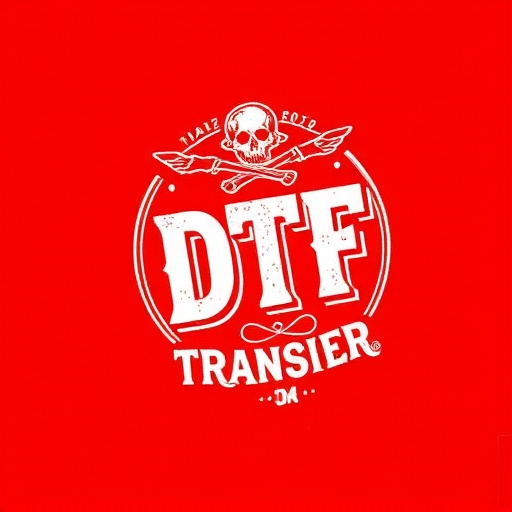
The quality of prints on synthetic fabrics using DTF (Direct to Fabric) transfer methods is influenced by several key factors. One of the most important considerations is the fabric’s composition and finish; different synthetics have varying levels of absorbency, which can significantly impact ink adhesion and overall print sharpness. Polyester-based fabrics, for instance, often yield crisp and vibrant DTF prints due to their high absorbency, while nylon or spandex might require specific pre-treatment to ensure optimal ink transfer.
Another critical aspect is the printing technique itself. For DTF printing, precision and pressure are essential. Using high-quality print heads and maintaining consistent pressure during the printing process ensures that inks bond securely with the fabric fibers. Additionally, the use of appropriate ink types designed for synthetic fabrics is paramount to achieving long-lasting, vibrant DTF transfers without smudging or fading over time.
Common Challenges in DTF Fabric Printing and Their Solutions
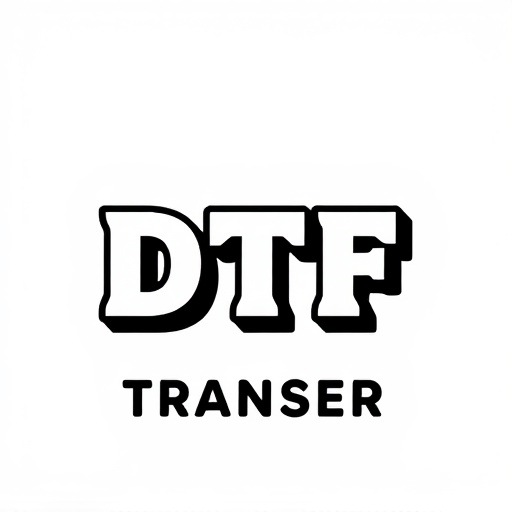
In the realm of synthetic fabric applications, Direct-to-Fabric (DTF) printing has gained traction for its vibrant and lasting DTF prints. However, this process isn’t without its hurdles. One common challenge is achieving high-quality DTF transfer onto various fabric types, especially those with complex textures or low absorbency. To overcome this, printers often pre-treat fabrics with suitable adhesives or use specialized inks designed for better adherence to diverse surfaces.
Another issue arises from the heat-sensitive nature of DTF technology. Improper temperature control can result in smudged or incomplete DTF prints. Solving this requires precise heating equipment and careful calibration, ensuring the optimal print temperature for each specific fabric and design combination. This meticulous approach guarantees crisp, clear DTF transfer every time.
Future Trends: Innovations in DTF Technology for Fabrics

The future of fabric decoration is looking bright with continuous innovations in Direct-to-Fabric (DTF) technology. DTF Transfer and DTF Printing are becoming increasingly popular, revolutionizing the way we adorn and personalize textiles. This cutting-edge method offers a range of benefits over traditional printing techniques, including faster production times, vibrant and durable prints, and an endless array of design possibilities. With advancements in DTF, manufacturers can now achieve intricate details, bold colors, and unique textures, making it an attractive option for both mass production and bespoke creations.
One of the most exciting trends is the integration of digital technologies with DTF processes, enabling even greater customization and efficiency. As DTF continues to evolve, we can expect to see more innovative applications, such as interactive fabrics, smart textiles, and sustainable printing solutions that reduce environmental impact. These future developments promise to transform the fashion, home décor, and advertising industries, providing endless opportunities for creators and designers worldwide.
